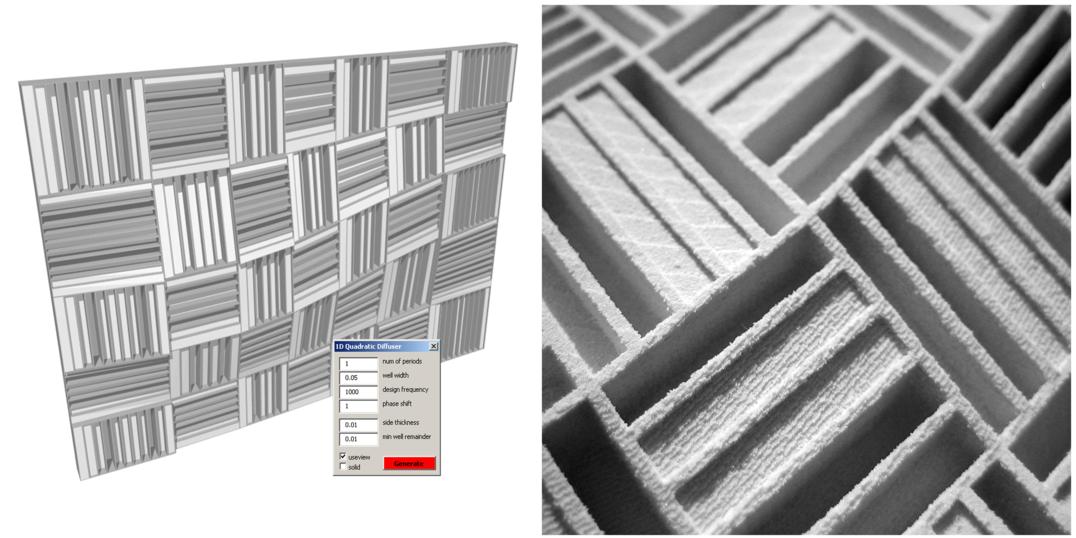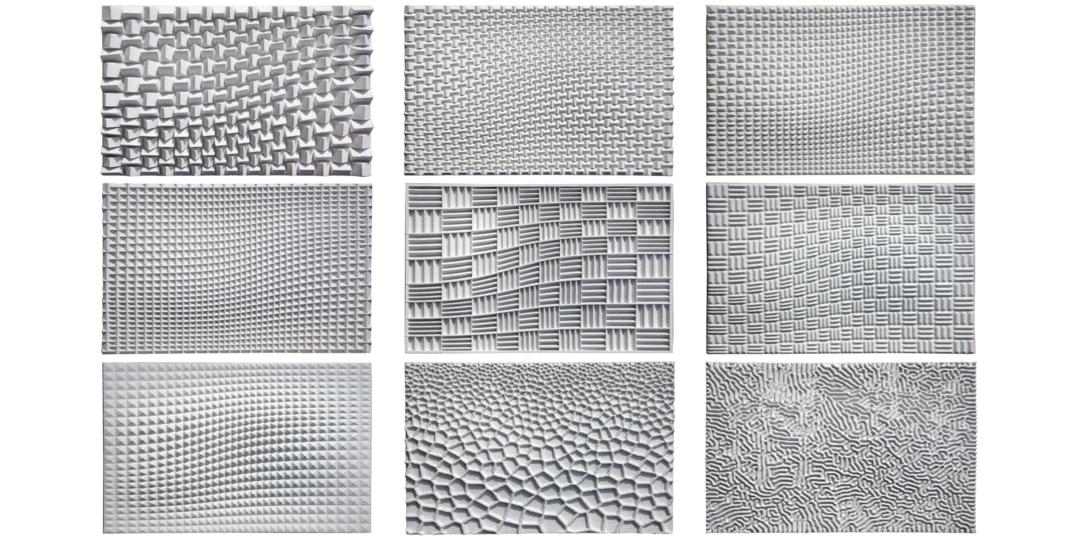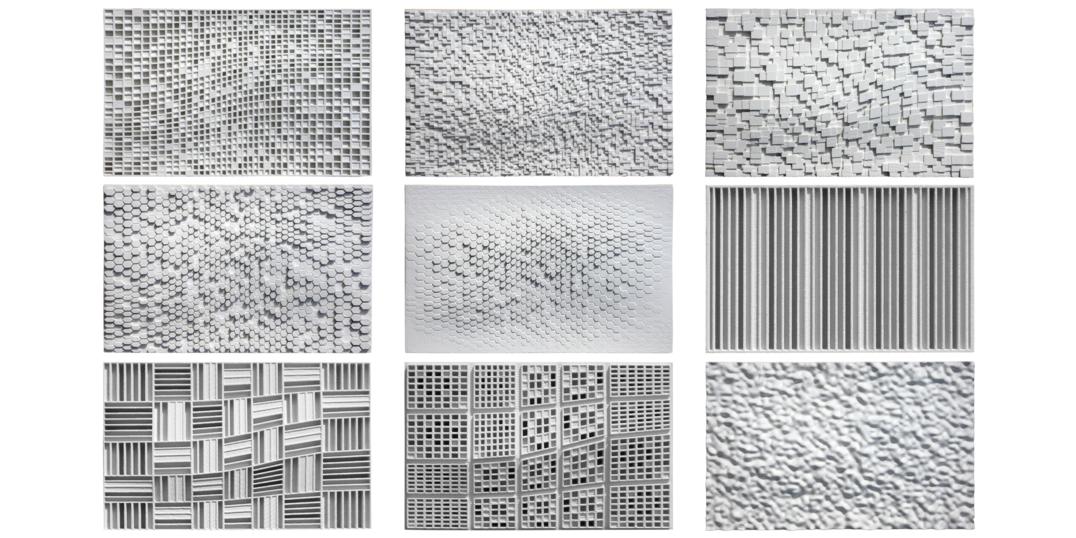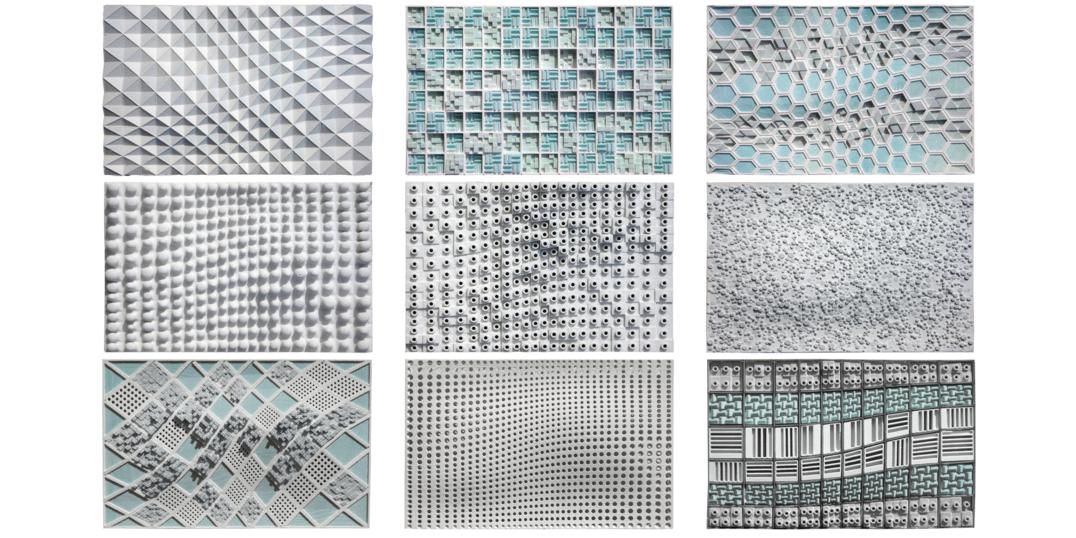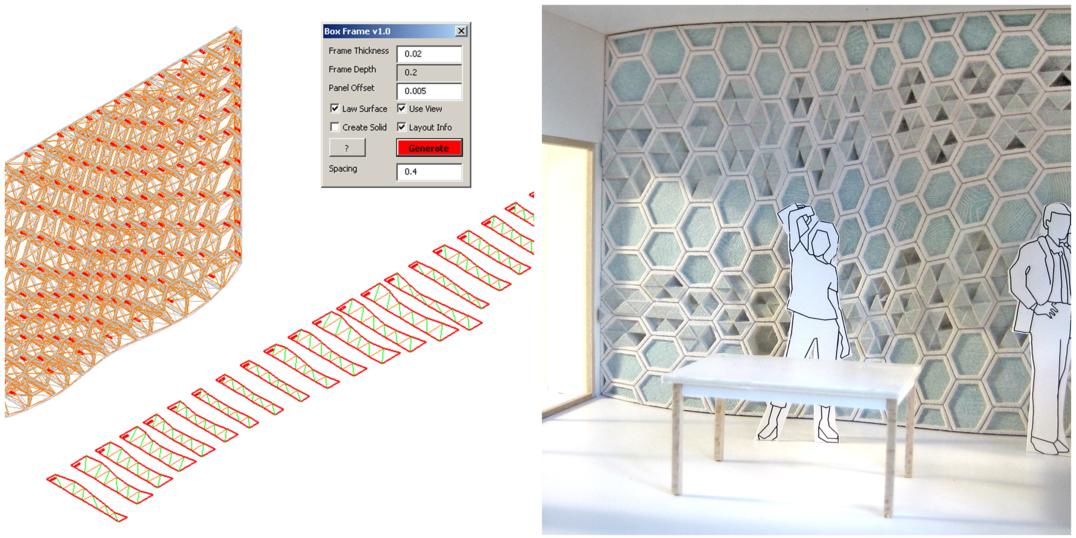Parametric Acoustic Surfaces
2008 - 2009
Image Source: Brady Peters
Acoustics is an important performance criteria for architecture, however one that is rarely considered by architects, except perhaps when designing concert halls. The acoustic quality of a space is determined not only by the volumetric geometry of the room but also its surface characteristics. By altering the geometry or material characteristics of surfaces in specific ways the acoustics of the room can be controlled. Once the geometric rules governing these acoustic alterations are understood, these rules can be encoded into a CAD system through parametric modeling or the use of computer programming. Acoustically regulating surfaces can then be generated by the architectural designer according to desired performance criteria. In this way, acoustic engineering is linked to architectural design, and this allows architectural design to become acoustically performance-driven. Three primary types of acoustic surfaces are considered in this research project: absorbers, diffusers, and combinations of the two. This research project studies the relationship of geometry and material to the physical properties of sound and how parametric systems and computer programming techniques can be used to generate new types of acoustically regulating surfaces.
Acoustic Absorbing Surfaces, Image by Brady Peters
The amount of absorption that a surface contributes to the overall room absorption is related to its material properties, its absorption coefficients measured in different frequency bands, and its surface area. The first parametric tool considered produces a geometry that is based on the foam wedges of the anechoic chamber, an extreme acoustic space with virtually no reverberation time. This digital tool produces triangular wedges whose geometry can be altered in terms of the number of wedges, the angle of the wedges, and the angle of the side chamfer. The parametric acoustic tool developed here can either produce a particular percentage increase in surface area, or it will report this data back to the user. The parameters of angle, depth, and chamfer angle can be modified.
Acoustic Scattering Surfaces, Image by Brady Peters
An acoustic scattering geometry discovered by Manfred Schroeder in the 1970s is the basis for many of the geometry generating tools developed here. The Schroeder diffuser is a one- or two- dimensional array of rectangular forms. The width of these diffusing elements is related to the frequency of sound that is desired to be diffused. The smaller the diffusing elements the higher the frequency of diffusion that occurs. While the depth of the diffusing element in its well appears to be randomly determined, it actually follows a particular mathematical sequence. The use of these mathematical formulae can add to the predictability of the sound diffusing characteristics of the geometry.
Acoustic Combination Surfaces (Absorbing and Scattering), Image by Brady Peters
It may be desirable for the acoustic and material properties of a surface to change or vary along the length of the surface. The acoustic properties of a surface should be able to change their acoustic regulating characteristics as they traverse from room to room, or even within the same room. An acoustic absorbing surface turns to a reflecting surface which again changes to a diffusing surface. This parametric acoustic tool modifies the maximum depth of the well of the diffuser, controlled geometrically by a three dimensional control surface, so that the diffuser geometry can be seen to emerge from a smooth wall, a reflecting surface becoming a sound scattering device. There are many possibilities within this family of options for new forms of architectural expression integrated with performance-driven form.
Image Source: Brady Peters
Through the use of parametric modelling and computer programming techniques, acoustic performance can be integrated into architectural design. Many of the relationships between acoustic performance and room geometry and material are now understood and these can be built into our digital design environment. With these new parametric acoustic tools, designers can generate new acoustically regulating surfaces that have a predictable acoustic performance. This can allow complicated acoustic performance criteria to be used creatively in the architectural design process.
